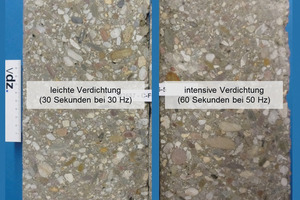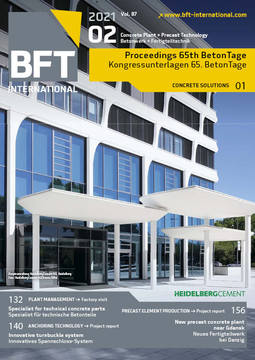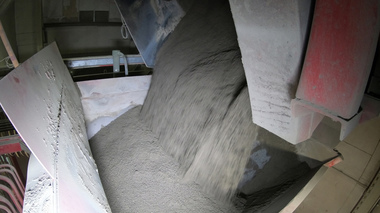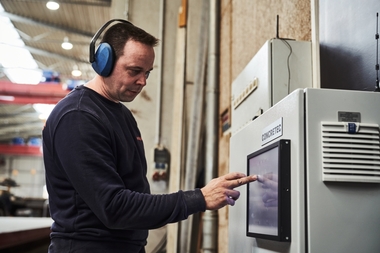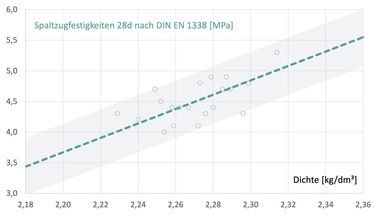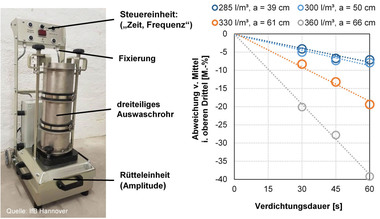Optimal compaction of easy-to-process concretes
Easy-to-process concretes (LVB) of flowable consistency (consistency classes F5 and F6) are especially suitable for manufacture of construction elements with complex geometry and a high percentage of reinforcement. A prerequisite for successful application is, in addition to low inclination to segregation, a compaction intensity adapted to the processing properties.
Within the scope of a research project conducted jointly y by the Research Institute of the German Cement Works Association (VDZ) and by Munich Technical University, investigations were carried out of the properties of easy-to-process concretes as a function of compaction intensity.
In the course of the investigation, it became clear that both the flowability and the viscosity of the concretes must be considered when choosing the compaction method and/or compaction intensity. The flowability can, for example, be quantified based on the slump. The viscosity and/or ductility can be classified based on the flowability in the slump test. The investigations showed that sensitivity to the compaction intensity increases with increasing flowability and diminishing ductility. High compaction intensity, for example, resulted in concretes of low ductility and high flowability in pronounced sedimentation of the coarse aggregate (Fig. 1) and in a slight reduction of compressive strength. These concretes should therefore be only lightly compacted, using for example a manual process such as poking or rodding. Concretes of medium toughness can be compacted somewhat more intensively: e.g., by internal vibrator. Here, care should be taken to ensure an adequate vibration time to prevent sedimentation of the coarse aggregate. Use of concrete of high ductility is recommended only in combination with high flowability (F6) or SCC, since otherwise very intensive compaction is required.

